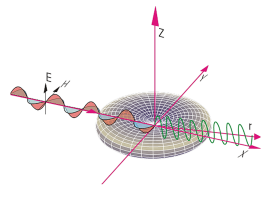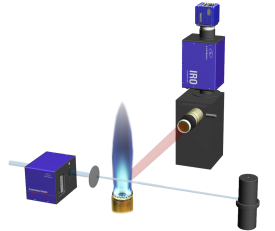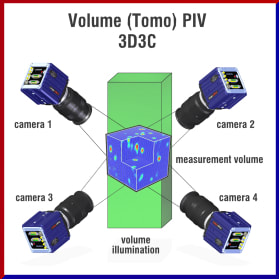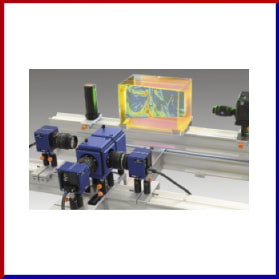Mie Scattering
Mie Scattering
|
Mie scattering is elastic scattered light of particles that have a diameter similar to or larger than the wavelength of the incident light. The Mie signal is proportional to the square of the particle diameter. Mie scattering is much stronger than Rayleigh scattering and, therefore, a potential source of interference for this weaker light scattering process. There is a strong angular dependency of the scattered intensity especially for smaller particles which has to be considered for successful Mie imaging experiments. Mie scattering is often used to measure flow velocities applying Particle Image Velocimetry (PIV).
|
Rayleigh Scattering
|
Rayleigh scattering is the elastic scattering of light by particles much smaller than the wavelength of the light. That is the case for gas phase molecules and, therefore, this method is suited for laser imaging in gases. Rayleigh scattering of sunlight by atmospheric molecules is the reason for the observed blue color of the sky, because the scattering efficiency varies inversely with the fourth power of the wavelength.
When gas composition and pressure are known Rayleigh imaging allows to measure planar temperature fields (Rayleigh Thermometry). Rayleigh scattering is much weaker than Mie scattering but more than two orders of magnitude stronger than Spontaneous Raman Scattering. Incandescence from soot and Mie scattering are processes that can totally obscure the Rayleigh signal. |
Raman Scattering
|
Spontaneous Raman Scattering is the inelastic counterpart to Rayleigh scattering. Raman scattering shows a spectral response that is shifted from the laser line. This shift is characteristic for the Raman active molecules and allows to measure all major species concentrations at the same time.
Major gas phase constituents like O2, N2, hydrocarbon fuels, CO2, H2 and H2O can be measured simultaneously together with the gas temperature. The drawback of Raman scattering in the gas phase is the weakness of the signal, roughly six orders of magnitude less than Mie scattering |
Related Instruments
|
*Pictures shown above are for reference only. Actual product may differ slightly.
**Some products may not be available in all countries. Please contact us for further information and clarification. |
Don't have what you are looking for?
Search Here. Alternatively, please contact us for more information.
|





